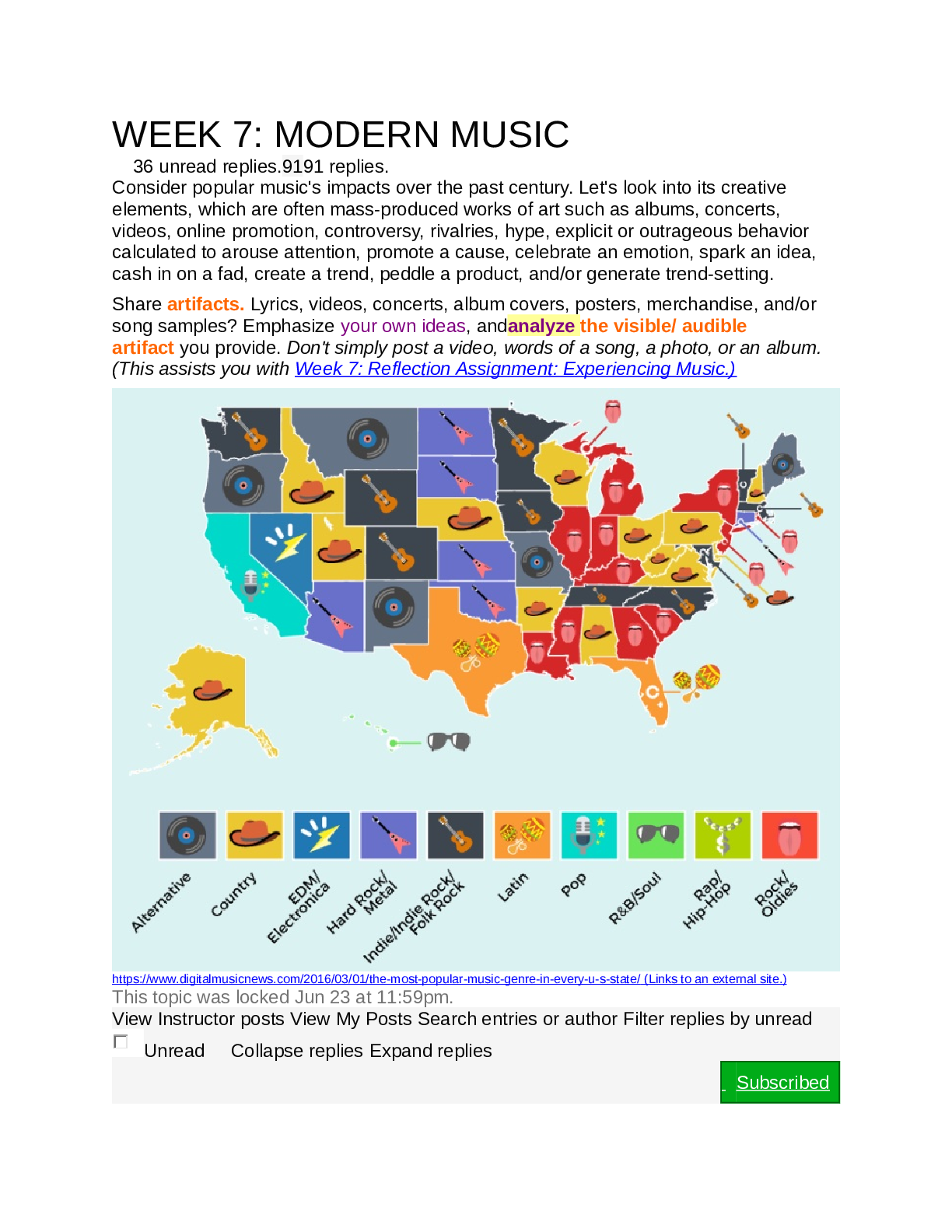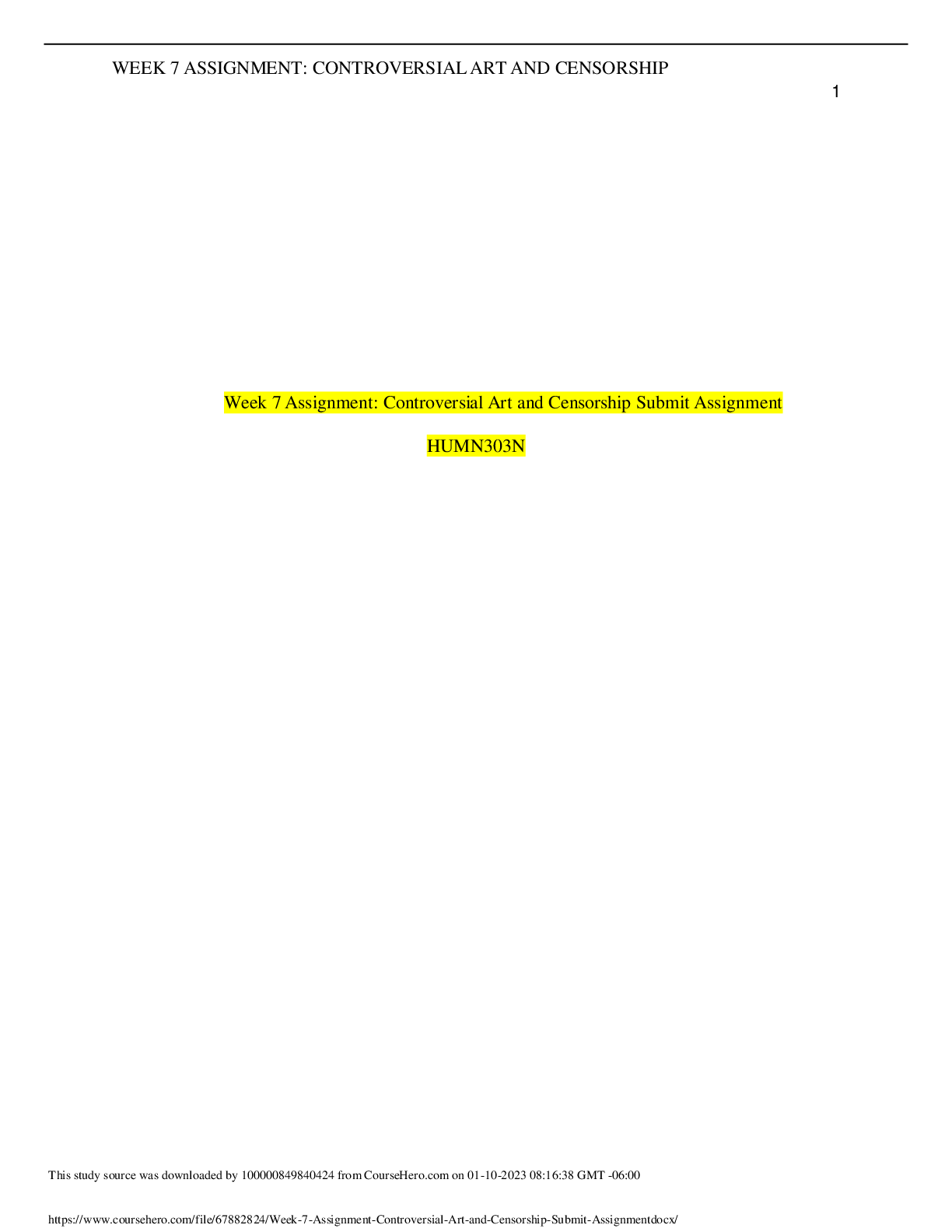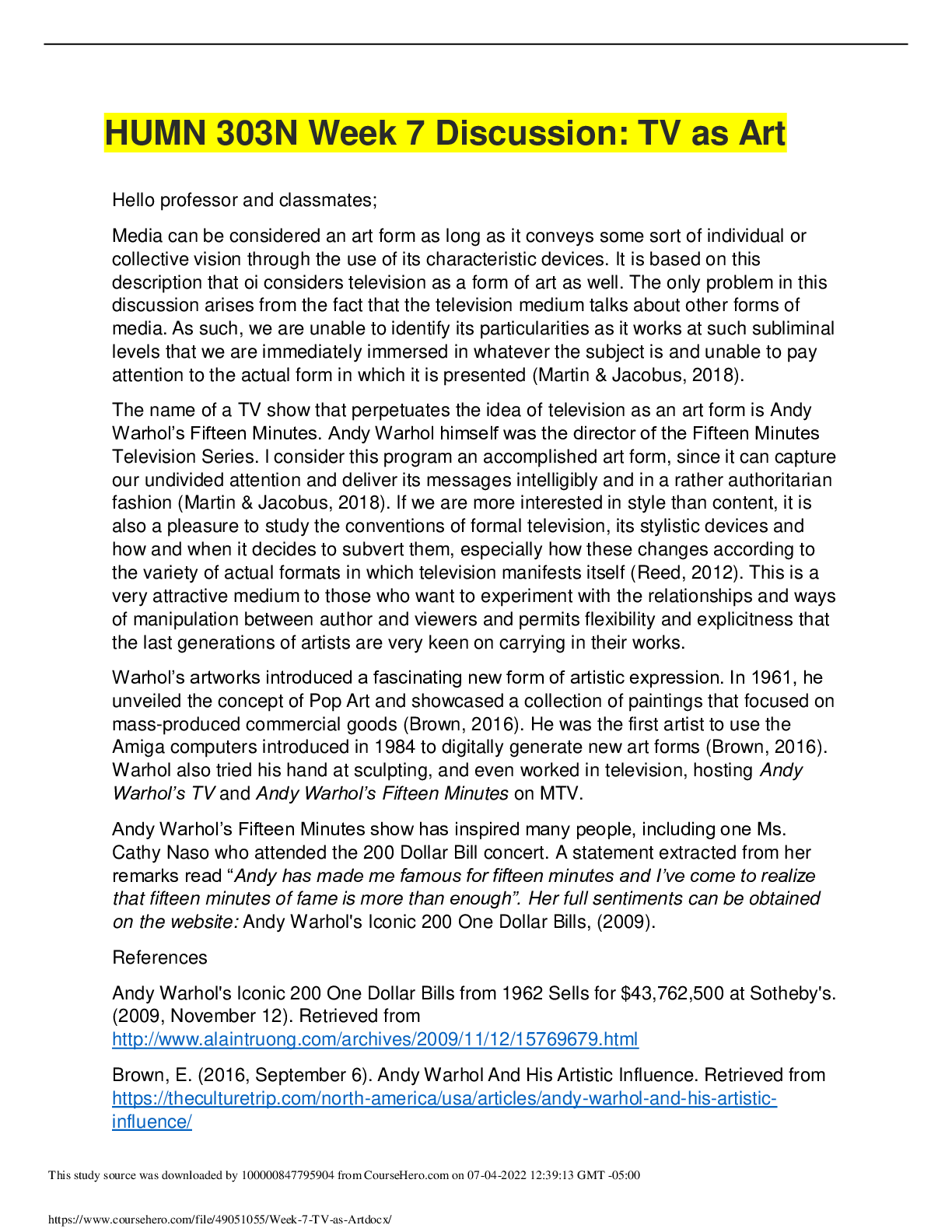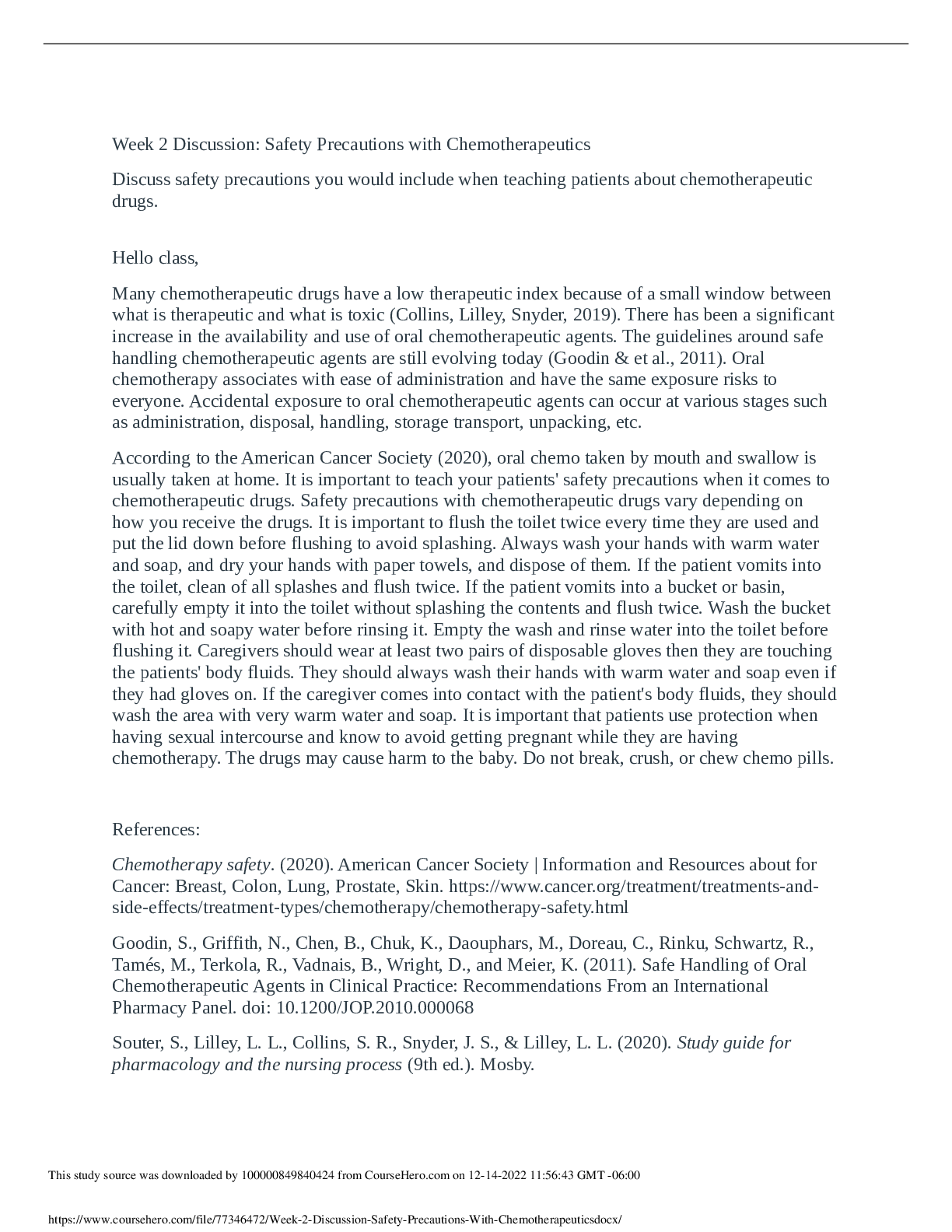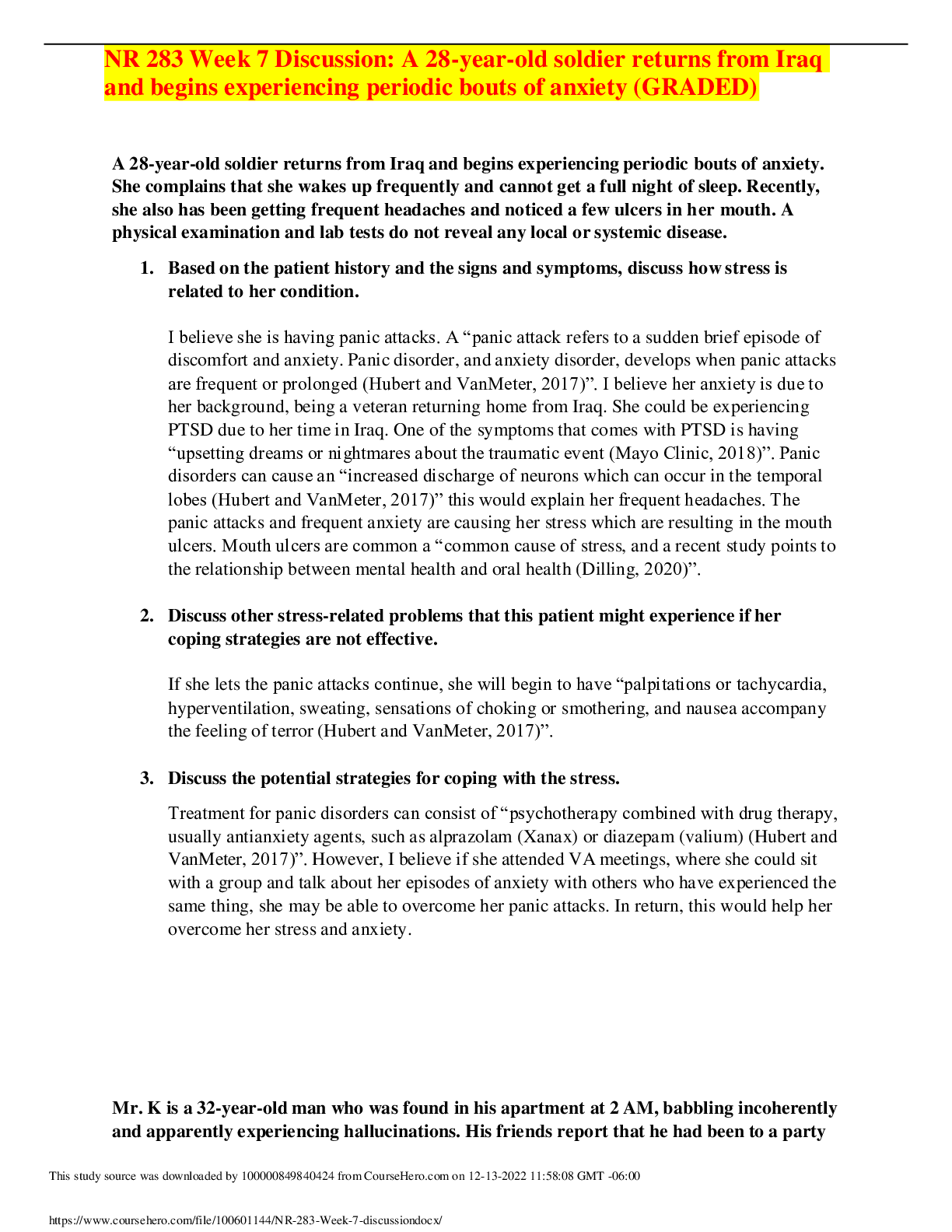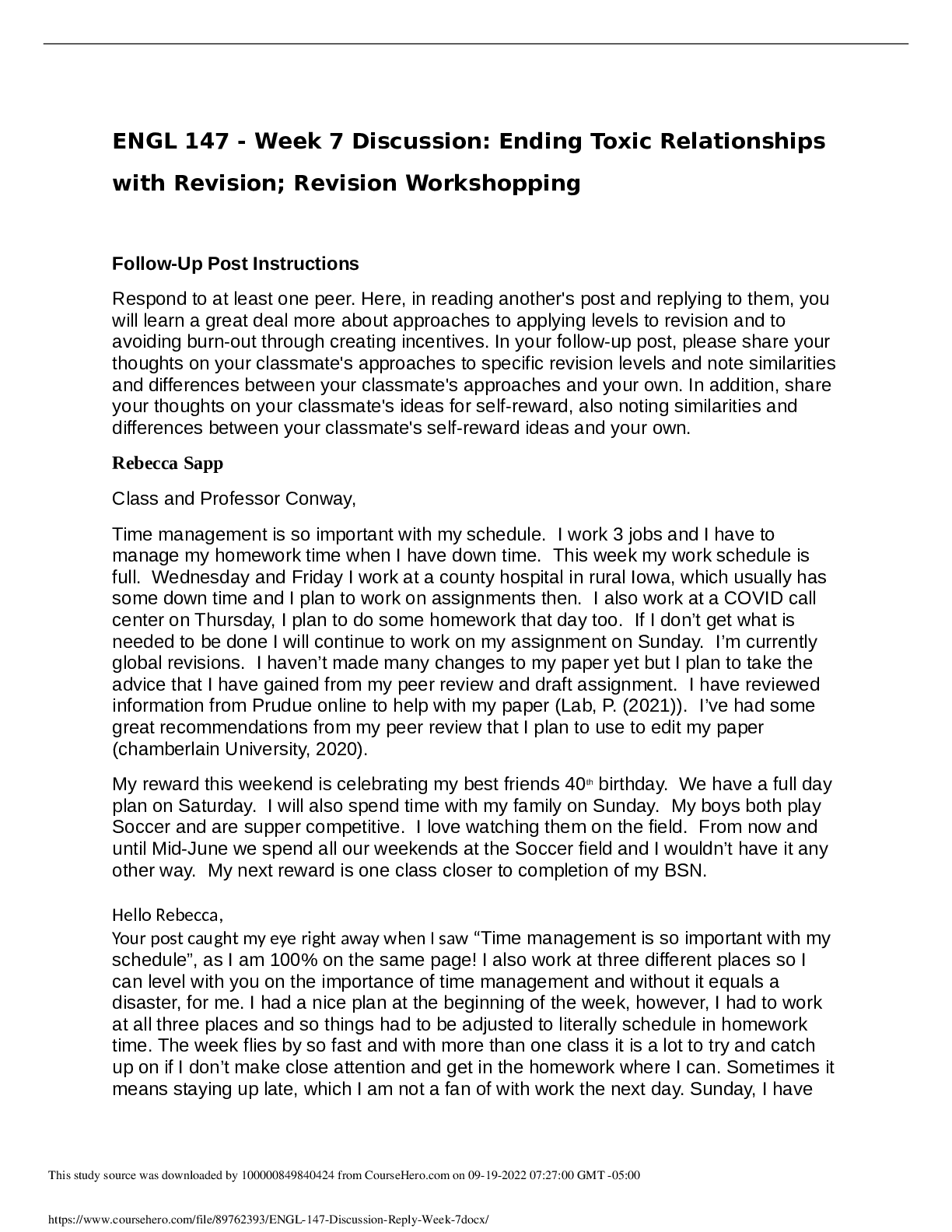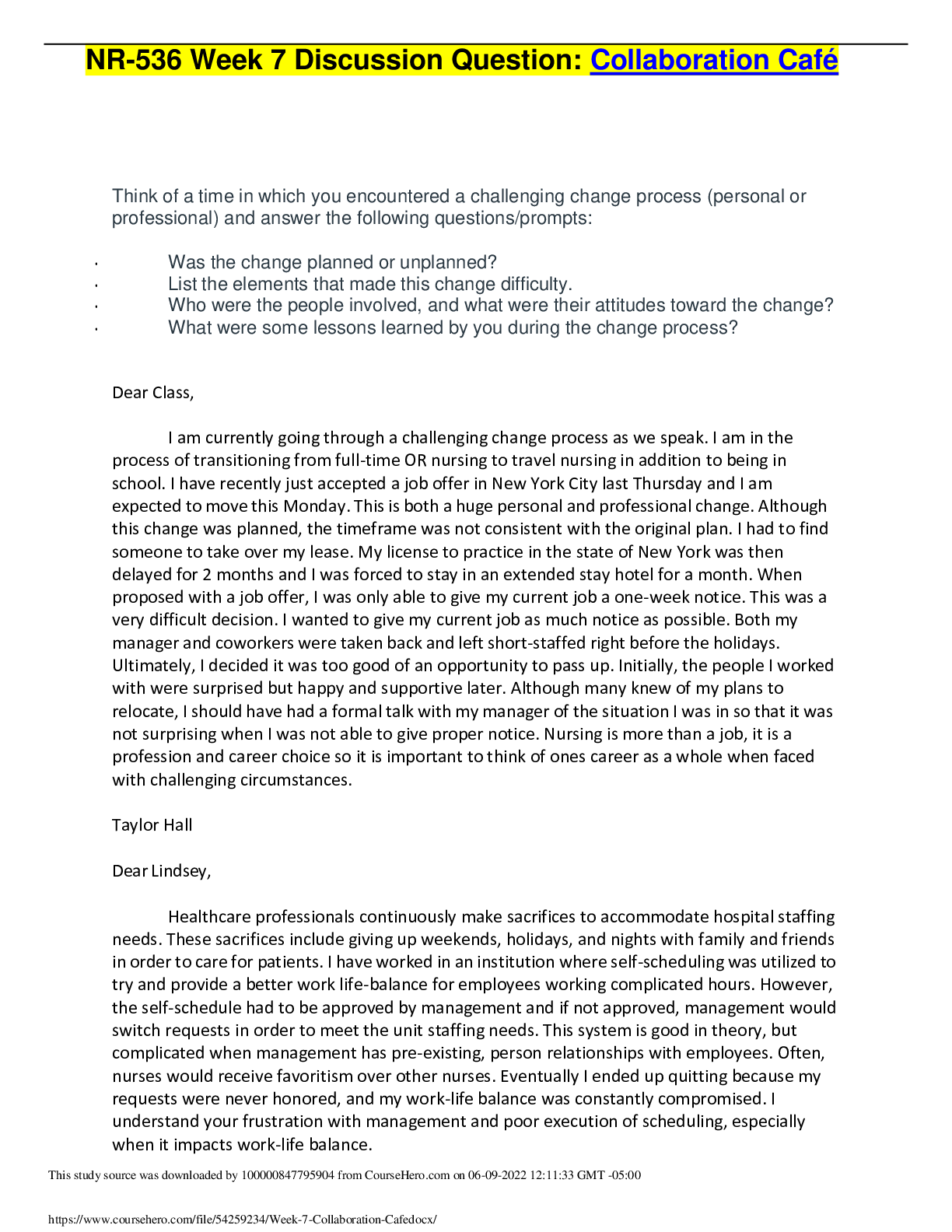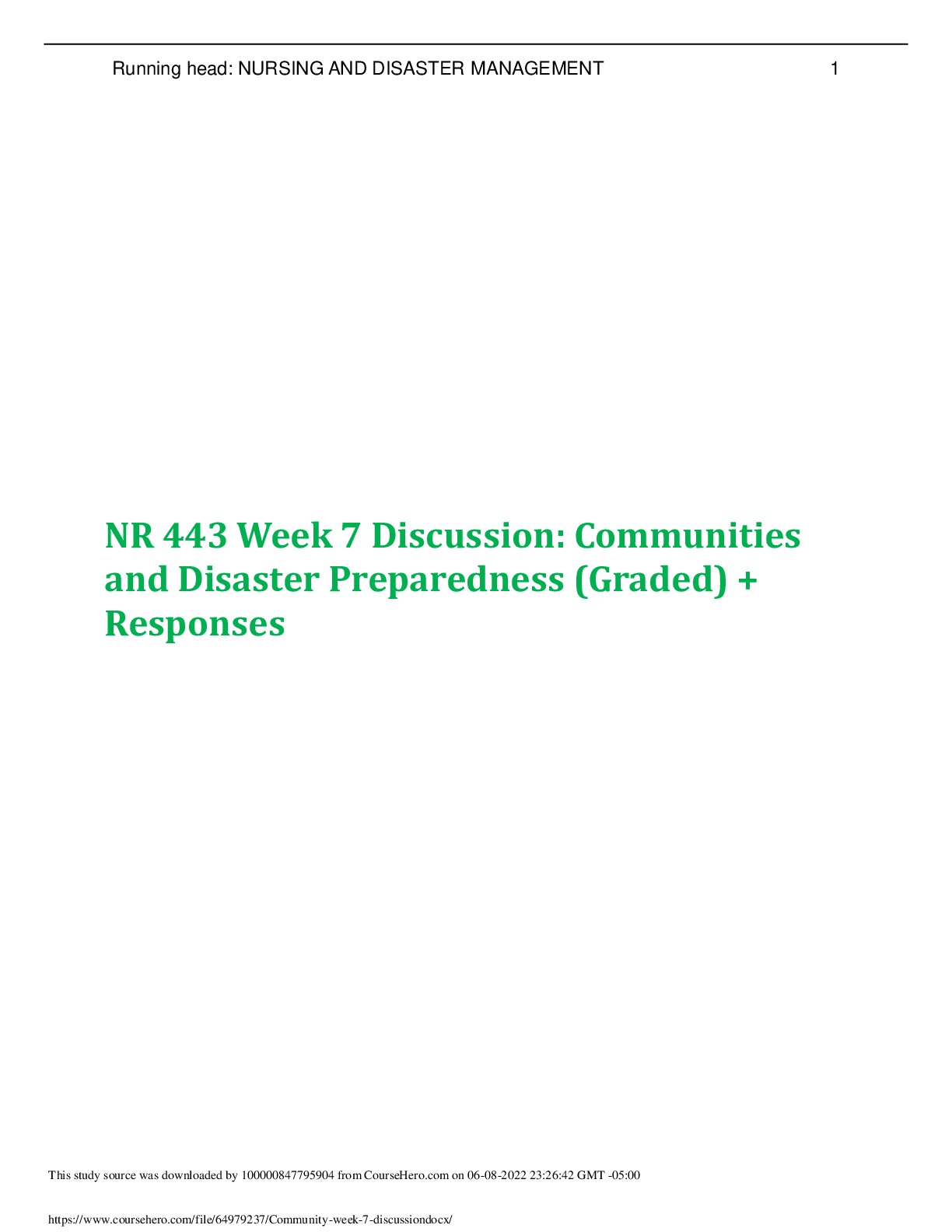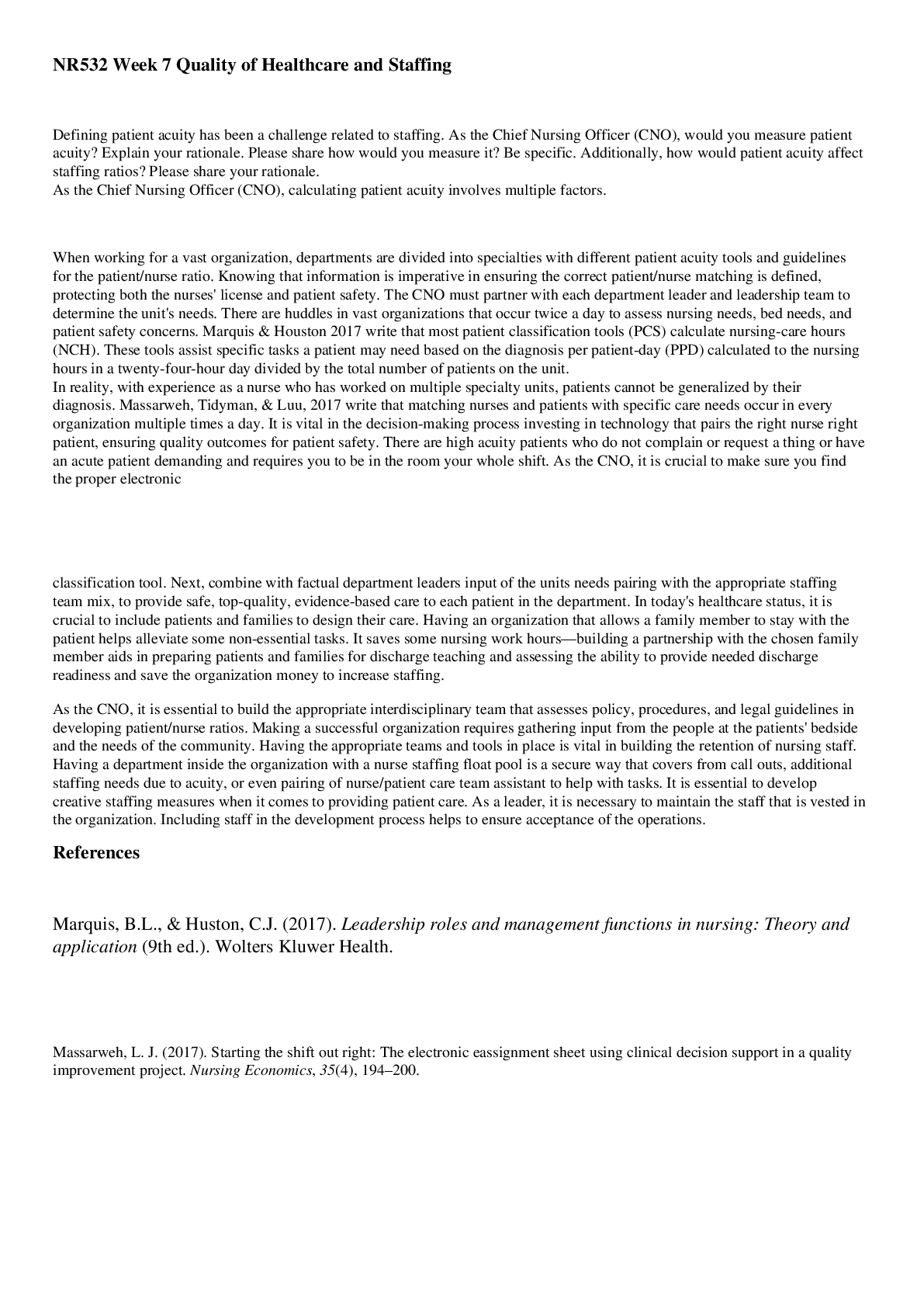*NURSING > DISCUSSION POST > NR 603 Week 7 discussion - Intensive Discussion, Download to Score A High Grade (A+) (All)
NR 603 Week 7 discussion - Intensive Discussion, Download to Score A High Grade (A+)
Document Content and Description Below
Week 7 Case Study Discussion Case Study 1: Based on the IQVIA opioid prescribing data a total of 56,935,332 perople or 17.4% of the US population has a prescription for an opioid in 2017. States... with the highest opioid prescribing rates includes Alabama, Arkansas, Tennessee, Mississippi, and Louisiana (CDC, 2018). Women are more likely than men to get an opioid prescription. SBIRT is an approach to help in the screening, brief intervention, and referral to treatment for persons at risk of substance abuse or persons with substance abuse disorders (SAMHSA, 2022). Early intervention is key and it starts with screening for the severity of substance abuse and the level of treatment needed. Brief intervention allows the health care professional to increase insight into the substance abuse and the patient’s movitaviton for change. Referring for treatment for specialty care is imperative for those patients that want to change their behavior and get intensive treatment (SAMHSA, 2022). The Drug Abuse Screening Test (DAST) includes 10 questions that identify substance abuse disorders. The DAST establishes if the patient would benefit from education, training, or a referral to a specialist. The emergency department will sometimes use the faster NIDA Quick Screen Single drug use question to save time. The NIDA question is, “How many times in the past year have you used an illegal drug or used a prescription medication for nonmedical reasons (Hawk & D’Onofrio, 2018)?” Based on the DAST questionnaire the following questions are recommended (Skinner, 1982): 1. When did you start taking oxycontin? 2. Are you taking other medications? 3. Who prescribed the Oxycontin to you? 4. When was your last refill? 5. How often and when are you taking the medication? 6. What is the dosage and do you ever take extra when you have more pain? 7. Do you take more than one drug at a time? 8. Have you had blackouts or flashbacks as a result of drug use? 9. Does your family complain about your involvement with drug use? 10. Have you ever had treatment for substance abuse? 11. Have you ever taken a medication specifically for your inflammatory arthritis like a antirheumatic drug (DMARDs)? Treatment plan for this patient: The CDC (2018) reminds clinicians that opioids are not first-line treatments for pain. Establish acceptable levels of pain and function. Discuss benefits of nonopioid therapies. A state specific drug monitoring (PDMP) must be done on every patient that has an opioid prescription or is requesting one. The treatment should include: 1. Methotrexate oral (DMARDs) monotherapy is strongly recommended over other antirheumatic medications because of combination regimens and low costs (ACR, 2021). 2. Glucocorticoids can also be used in the lowest dose for the shortest time to reduce inflammation quickly so the Methotrexate can start to work 9ACR, 2021). 3. Nonsteroidal anti-inflammatory drug will also reduce inflammation and reduce pain (ACR, 2021). 4. Refer to a Rheumatologist for inflammatory arthritis. Refer patient back to health care professional that originally wrote the script for the Oxycotin. Personally I do not want to attract and write pain medication for patients. My preceptor has educated me on not writing Adderrall or pain medication, the patient population will go downhill when you do that. Case Study 2: In the past, states with the highest number of death rates from opiate use disorder (OUD) had the lowest rates of health care providers that could prescribe buprenorphine. The CARA (comprehensive addiction and recovery act) took effect in 2016 and now the SUPPORT (substance use disorder that promotes recovery and treatment) Act was signed into law in 2018 (Moore, 2019). The SUPPORT Act expands CARA and by allowing NPs to treat 100 patients that are provided MAT (medication assisted treatment) in qualified practices (Moore, 2019). Over 130 people die every day from opioid overdose in the US and over 2.4 million people in the US suffer from substance abuse disorders related to opioids and currently there are 248,000 NPs licensed to help these people overcome their substance abuse (Moore, 2019). MAT improves patient outcomes and reduces illicit opioid use and criminal activity by offering medication, counseling, and behavioral therapies to provide patient focused care. MAT improves outcomes by reducing the risk of HIV, hepatitis C, or skin abscesses (Moore, 2019). MAT medications include methadone, naltrexone, and buprenorphine. The gold standard treatment is buprenorphine naloxone (Suboxone) combination it is a sublingual film or tablet. It is the least likely to be abused because it cannot be injected or crushed, naloxone is a complete opioid antagonist so when injected it blocks all effects of opioids (Moore, 2019). The patient scored 15 on the COWS scale indicating moderate withdrawal. His symptoms include anorexia and diarrhea, he is yawning and sweating upon examination. Treatment will include: • Initiating buprenorphine/naloxone (Suboxone) observing response (Mauger et al, 2014) a. First dose of Suboxone 2/4 mg sublingual should be given 18-36 hours after last dose of Oxycotin. i. Take Suboxone 2/0.5 mg sublingual once then observe for 2 hours ii. If symptoms are not relieved give an additional Suboxone 2/0.5 mg sublingual dose should be given. If symptoms are not relieved after 2 hours give an additional dose of Suboxone 2/0.5 mg up to a max of Suboxone 8/2 mg on day 1. iii. Day 2 treat withdrawal symptoms and dose titration of Suboxone. Using the least possible dose of Suboxone to control withdrawal symptoms. Pregnanct women and patients using ultra-long acting opioids like methadone should be induced using buprenorphine monotherapy (Zoorob et al, 2018). For symptoms of diarrhea and diaphoresis take the following: 1. Diarrhea: Loperamide 4 mg PO PRN up to 4 times per day on day 2. Then reduce to 2 mg PO PRN up to 4 times per day. 2. Diaphoresis: Clonidine 0.1 mg PO every 8 hours for 4 days, then 0.05 mg PO every 8 hours for 2 days, then 0.025 mg PO every 8 hours for 1 day then stop. • The MAT plan for this patient should include ensuring the patient has a drug free environment to live in and to stop socializing with others that abuse substances. A referral to a social worker, psychiatrist or counselor that is trained in substance abuse disorders. a. Baseline urine drug tests should be performed at initiation and throughout treatment. b. Treatment contracts and consents with the patient should be signed and agreed to. • For patients taking Xanax 2 mg PO TID it is dangerous to stop taking benzodiazepines so tapering them is the safest way. Education combined with tapering is the most successful method of stopping benzodiazepine use (Dou et al, 2019). The following schedule will help the patient taper off Xanax: o Reduce the starting Xanax dose by 5-25% then the patient may lower the dose in conjunction with cognitive behavioral therapy and counseling 5-25% each week depending on withdrawal symptoms (Dou et al, 2019). If the patient is taking Xanax 2mg in the morning, 2 mg in the afternoon, and 2 mg at night the first week. The second week the patient should take 1.5 mg PO TID, the third week the patient will take 1 mg PO TID. The fourth week 1 mg PO BID and the fifth week the patient will take 0.5 mg BID for the next 14 days. References American College of Rheumatology (ACR). (2021). 2021 American College of Rheumatology Guideline for the Treatment of Rheumatoid Arthritis. Arthritis Care & Research, 73(7), 924-939. Centers for Disease Control and Prevention. (2022) Guideline for prescribing opioids for chronic pain. Retrieved from https://www.cdc.gov/drugoverdose/pdf/prescribing/Guidelines_Factsheet-a.pdf Centers for Disease Control and Prevention. (2018). Understanding the epidemic. Retrieved form https://www.cdc.gov/drugoverdose/epidemic/index.html Centers for Disease Control and Prevention. (2018). 2018 Annual Surveillance Report of Drug- Related Risks and Outcomes — United States. Surveillance Special Report 2pdf icon. Centers for Disease Control and Prevention, U.S. Department of Health and Human Services. Dou, C., Rebane, J., Bardal, S. Interventions to improve benzodiazepine tapering success in the elderly: a systematic review. Aging Mental Health. (2019) Apr;23(4):411-416. doi: 10.1080/13607863.2017.1423030. Epub 2018 Jan 16. PMID: 29336611. Gomes, T., Tadrous, M., Mamdani, M. M., Paterson, J. ., & Juurlink, D. N. (2018). The burden of opioid-related mortality in the United States. JAMA network open, 1(2), e180217- e180217 Hawk, & D’Onofrio, G. (2018). Emergency department screening and interventions for substance use disorders. Addiction Science & Clinical Practice, 13(1), 18–18. https://doi.org/10.1186/s13722-018-0117-1 Mauger, S., Fraser, R., & Gill, K. (2014). Utilizing buprenorphine-naloxone to treat illicit and prescription-opioid dependence. Neuropsychiatric disease and treatment, 10, 587–598. https://doi.org/10.2147/NDT.S39692 Moore, D. J. (2019). Nurse practitioners’ pivotal role in ending the opioid epidemic. (Links to an external site.) The Journal for Nurse Practitioners, 15(2019), 323-327. Sustance Abuse and Mental Health Services Administration (SAMHSA). (2022, March 30). Screening, brief intervention, and referral for treatment. Retrieved from https://www.samhsa.gov/sbirt Skinner, H. A. (1982). The Drug Abuse Screening Test (DAST). Addictive Behavior, 7(4), 363- 371. https://gwep.usc.edu/wp-content/uploads/2019/11/DAST-10-drug-abuse-screening- test.pdf Zoorob, Kowalchuk, A., & Mejia de Grubb, M. (2018). Buprenorphine Therapy for Opioid Use Disorder. American Family Physician, 97(5), 313–320 [Show More]
Last updated: 1 year ago
Preview 1 out of 8 pages
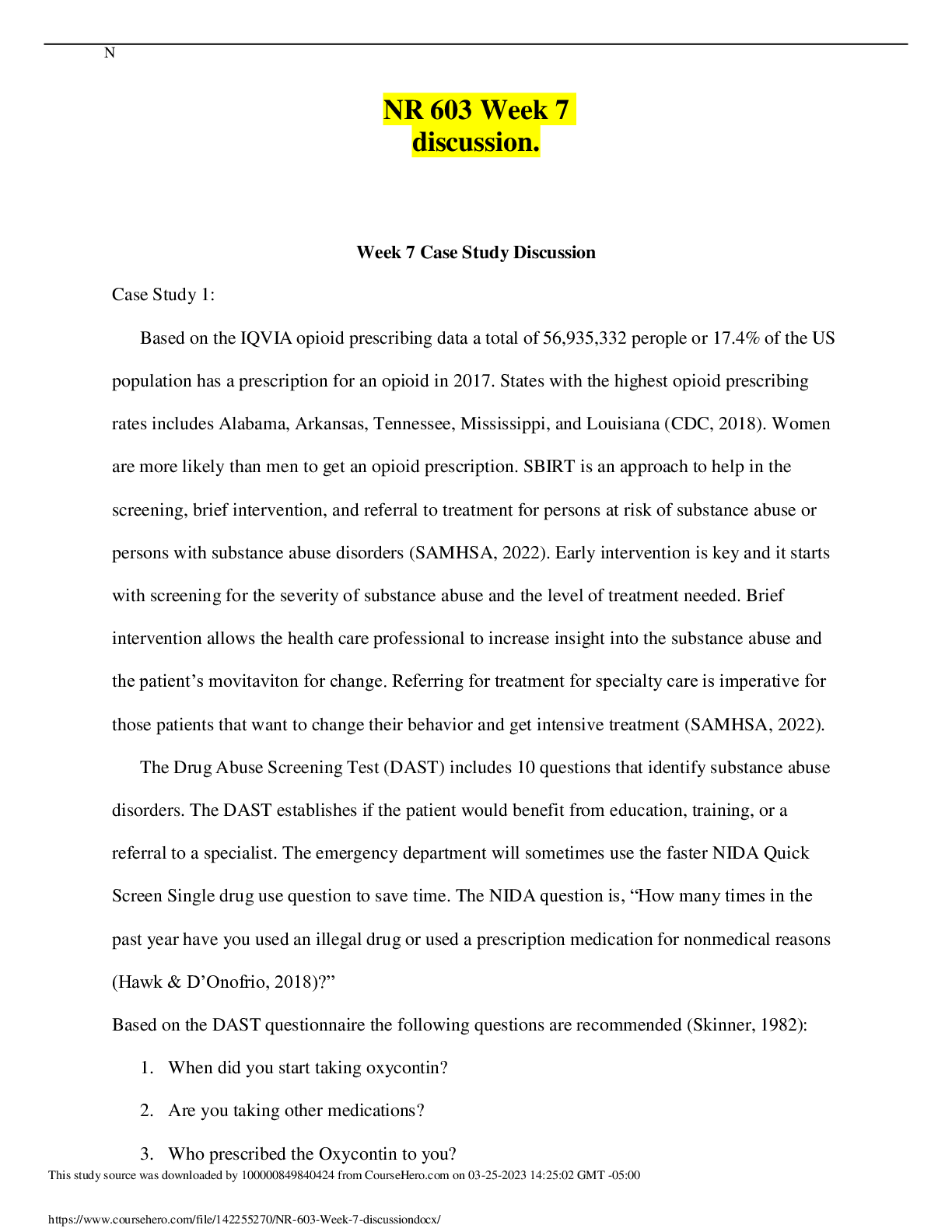
Reviews( 0 )
Document information
Connected school, study & course
About the document
Uploaded On
Mar 25, 2023
Number of pages
8
Written in
Additional information
This document has been written for:
Uploaded
Mar 25, 2023
Downloads
0
Views
62


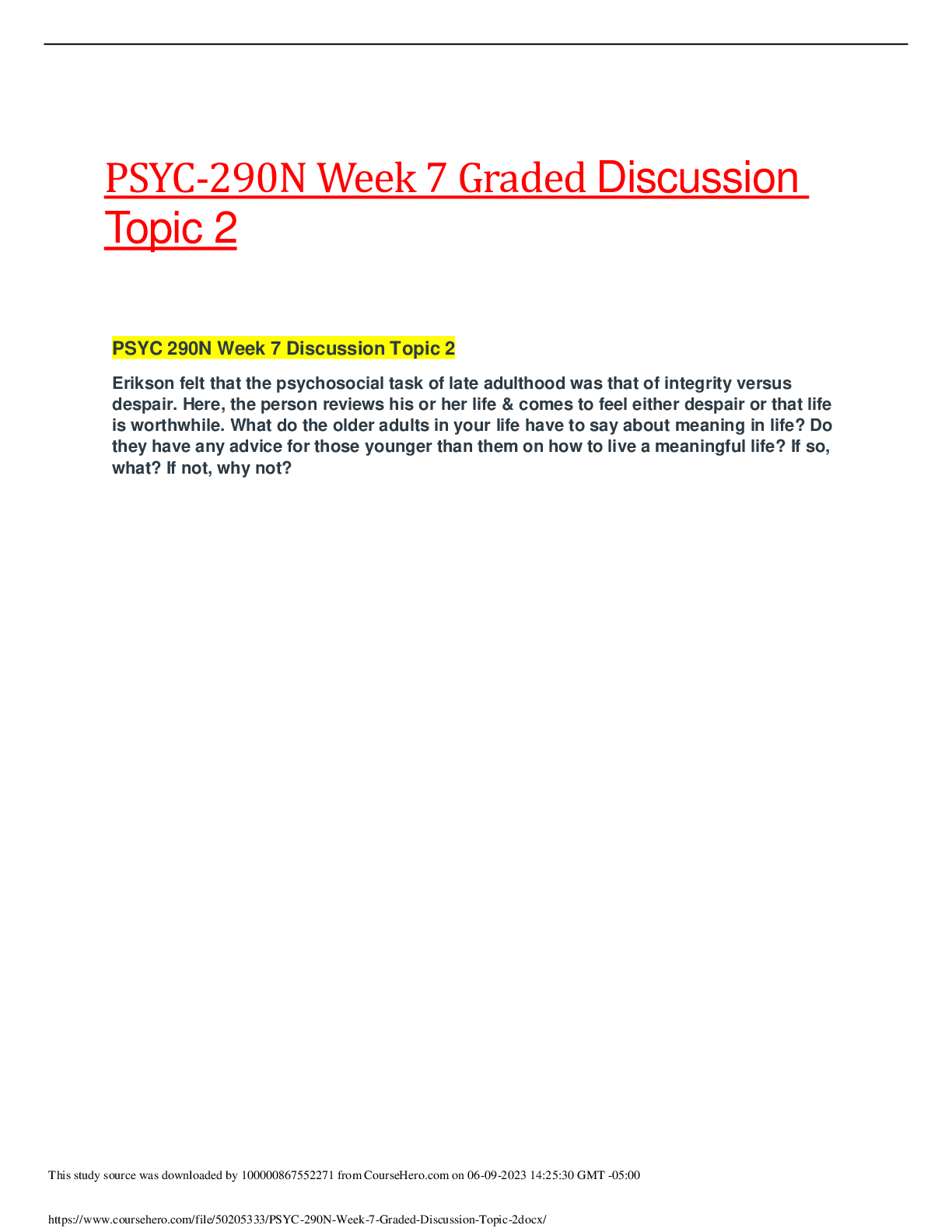
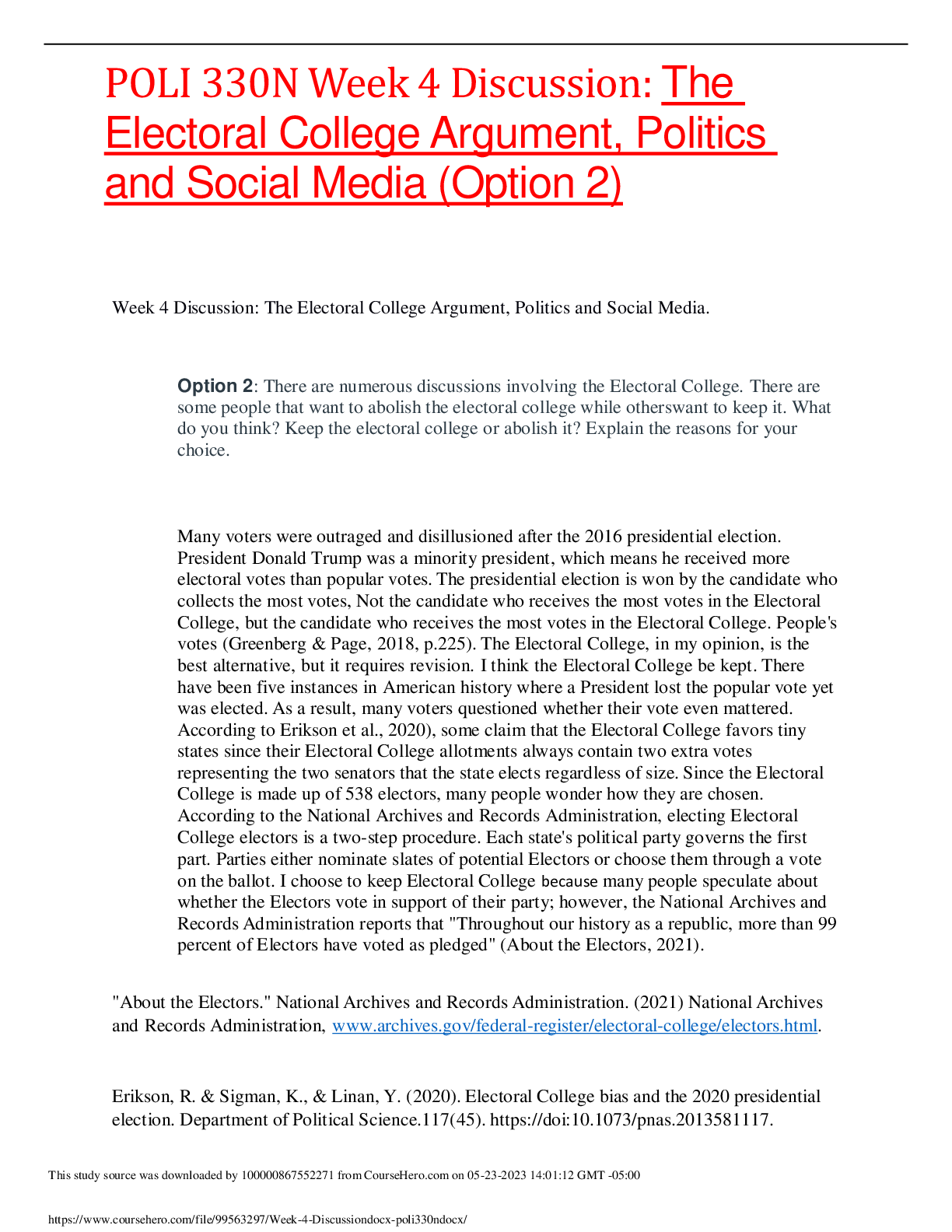

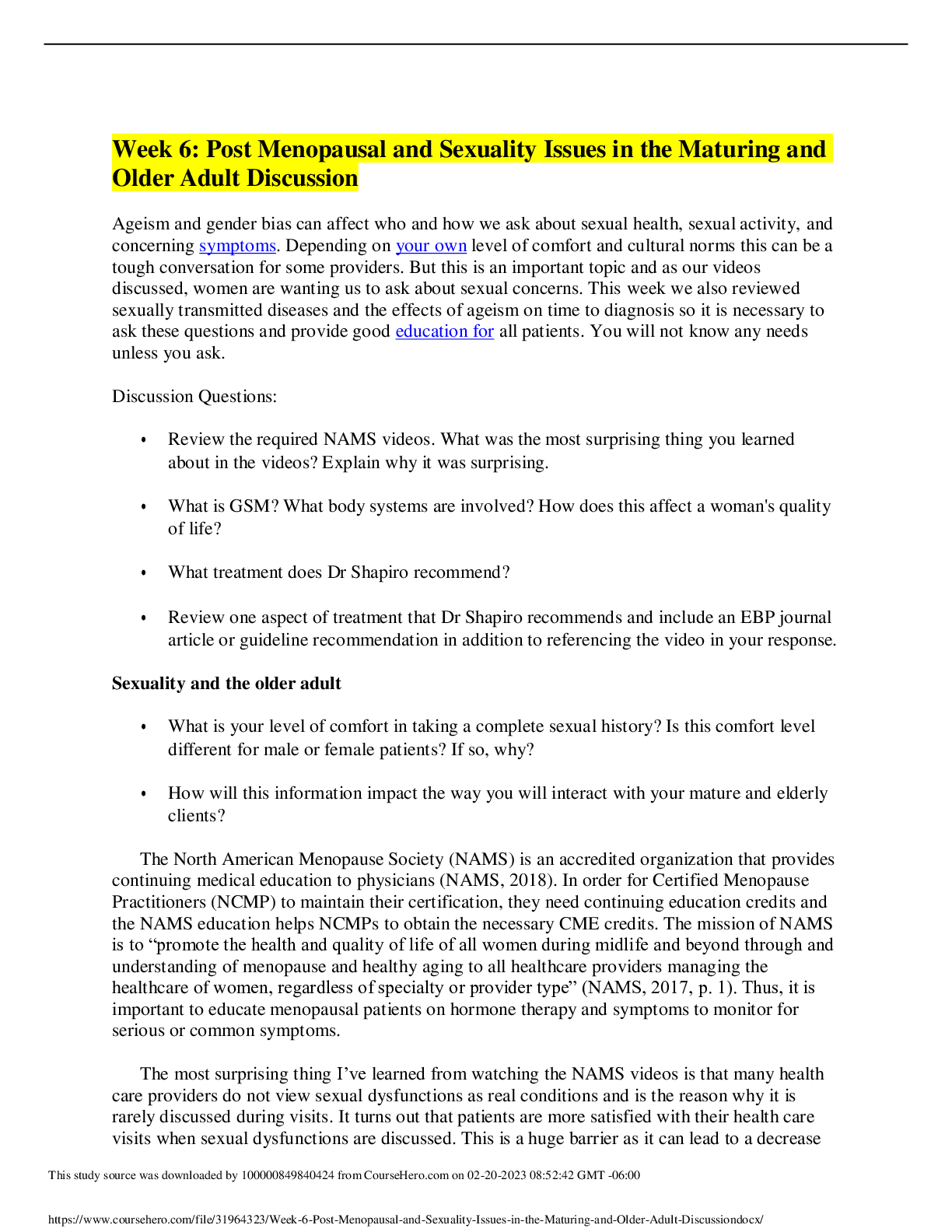
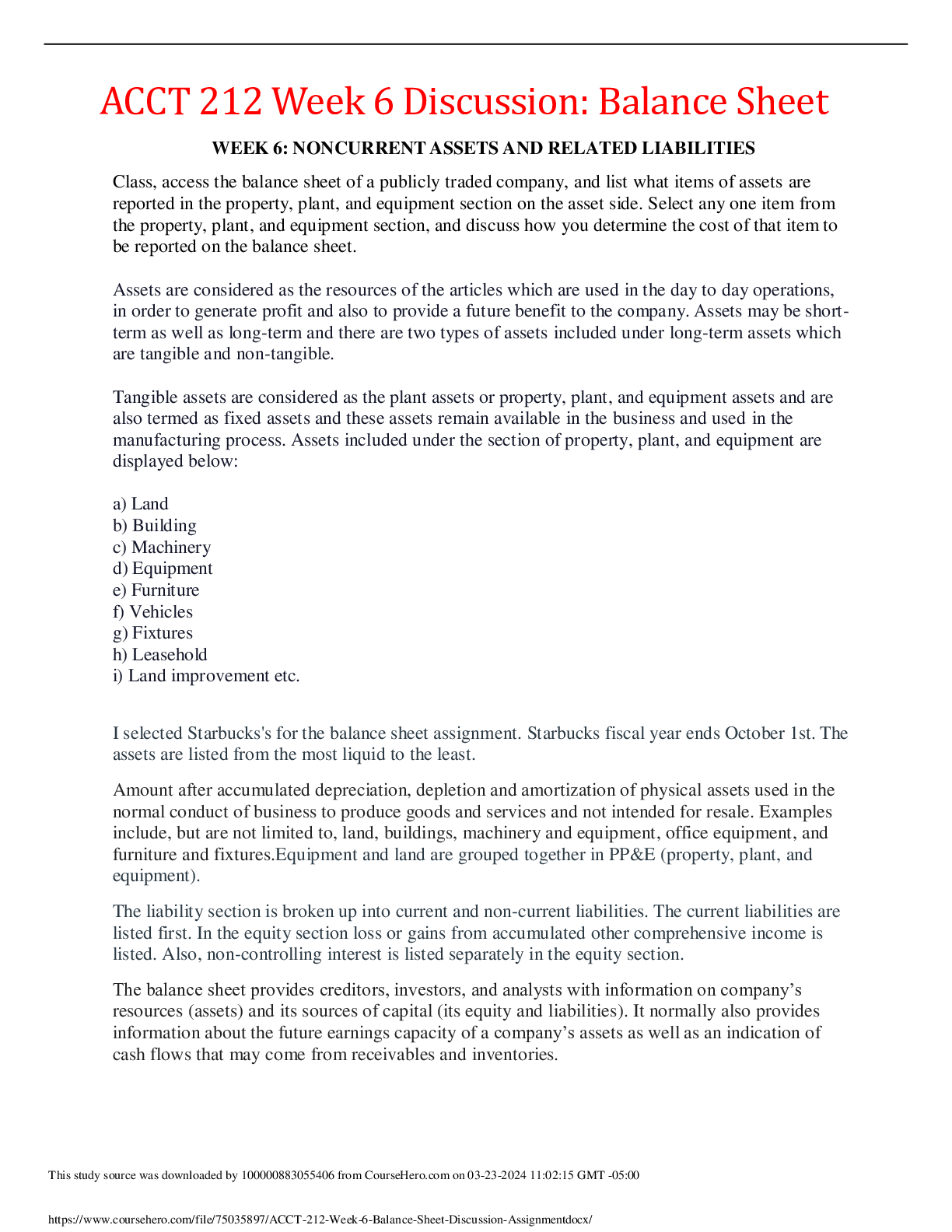
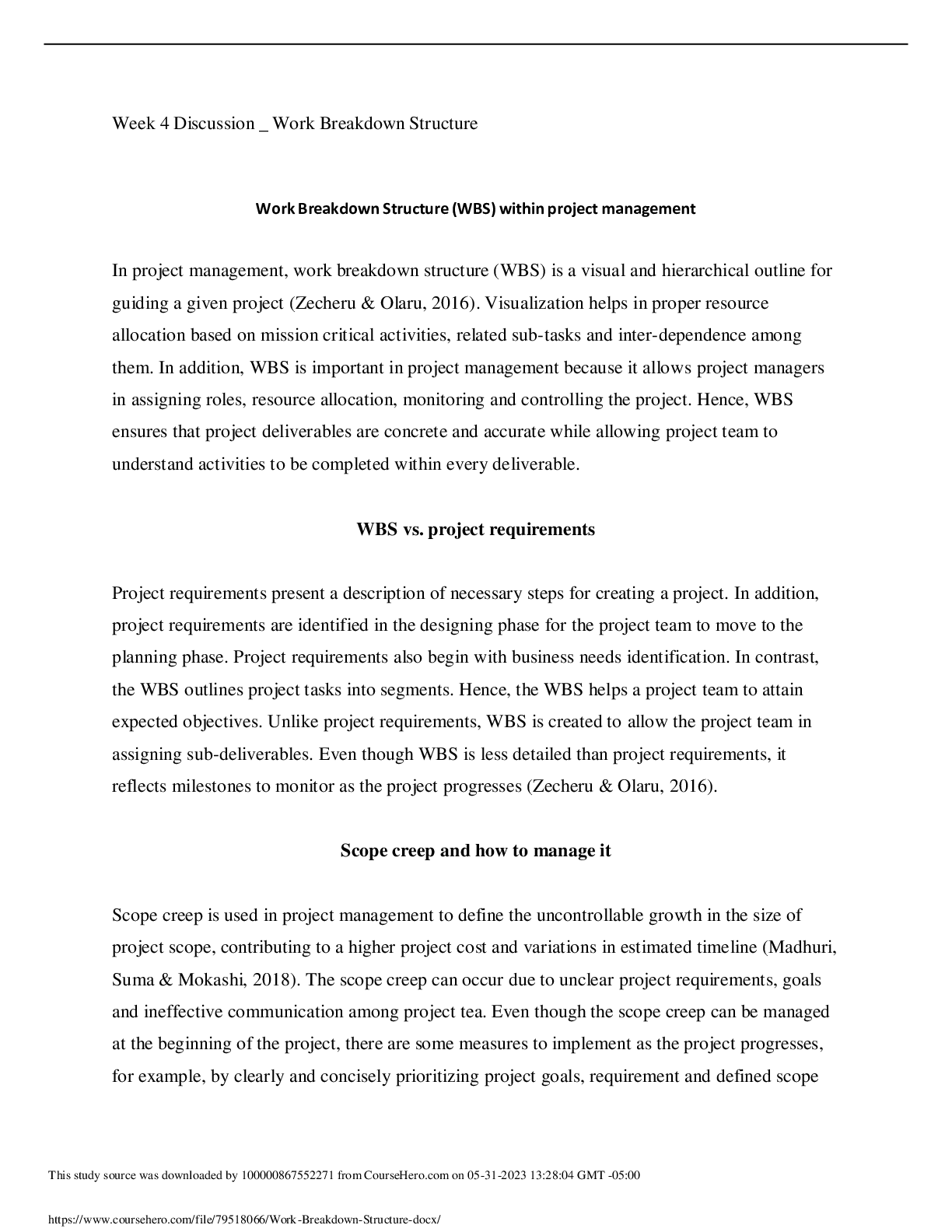







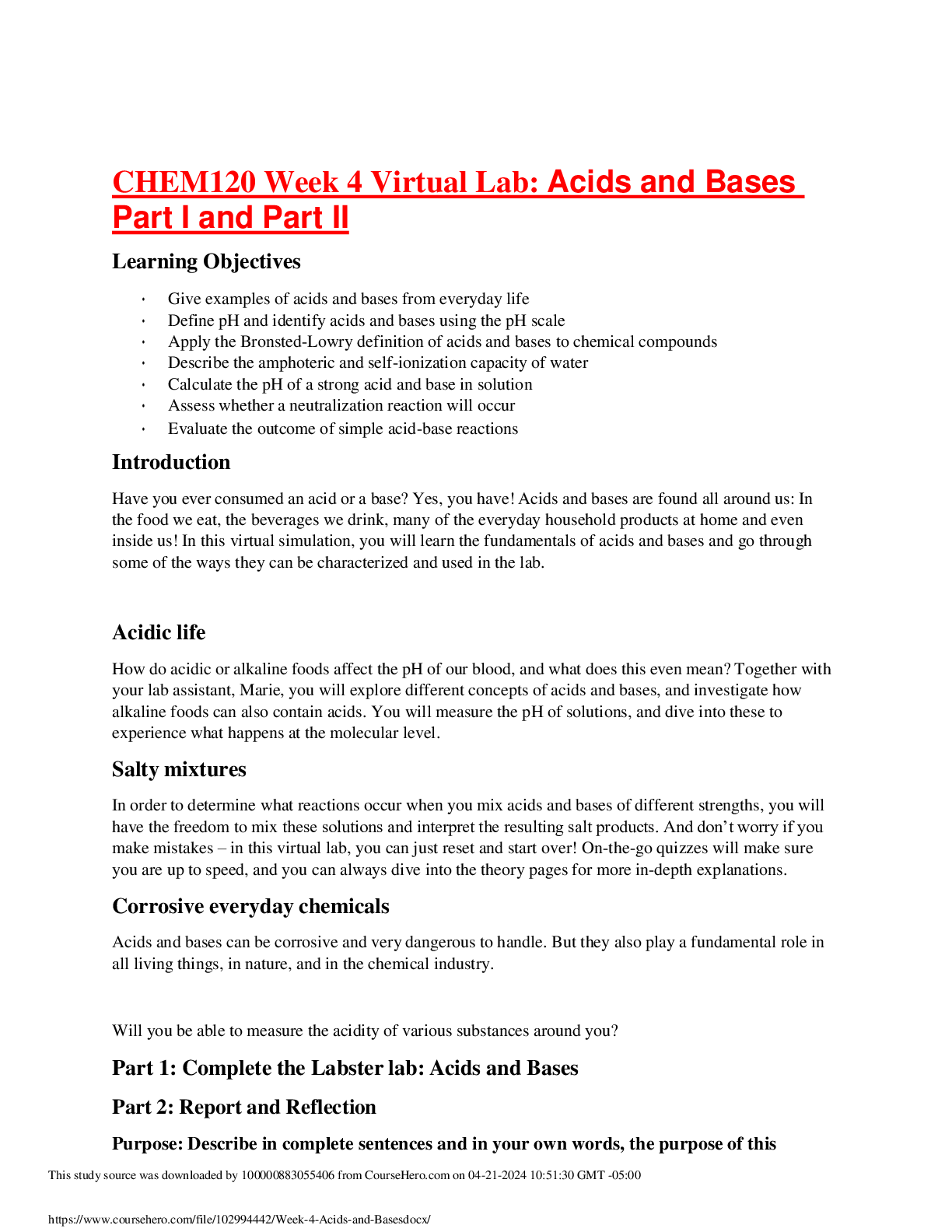
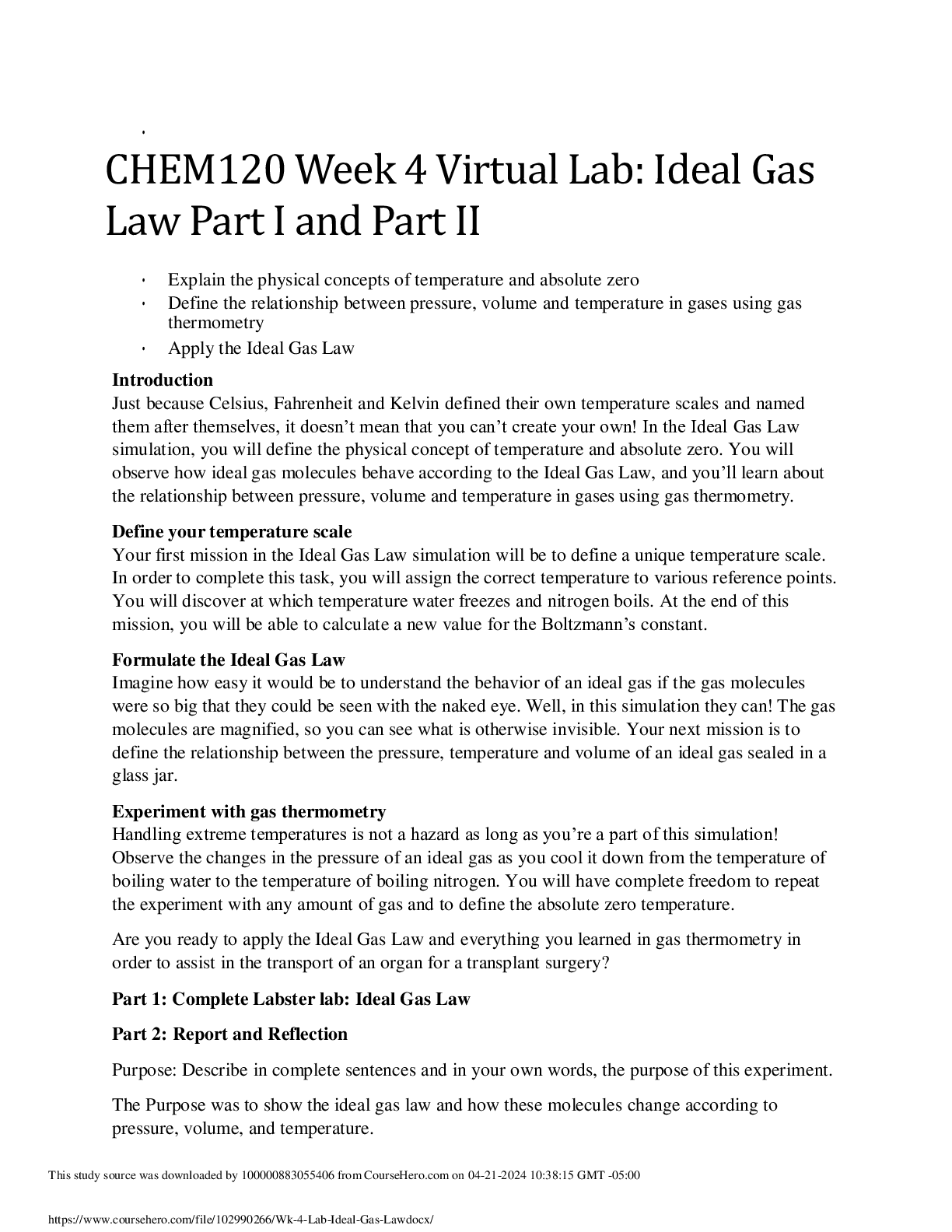
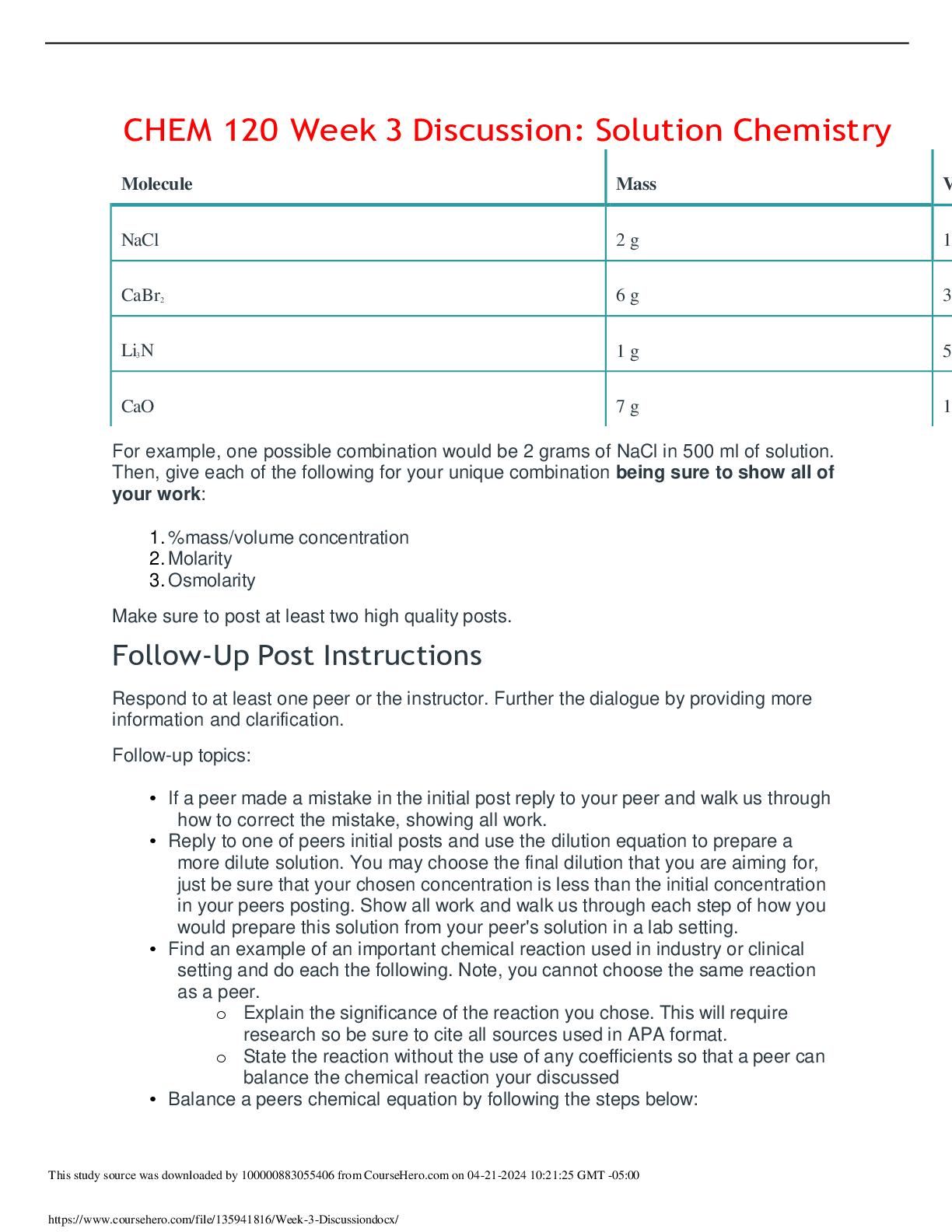
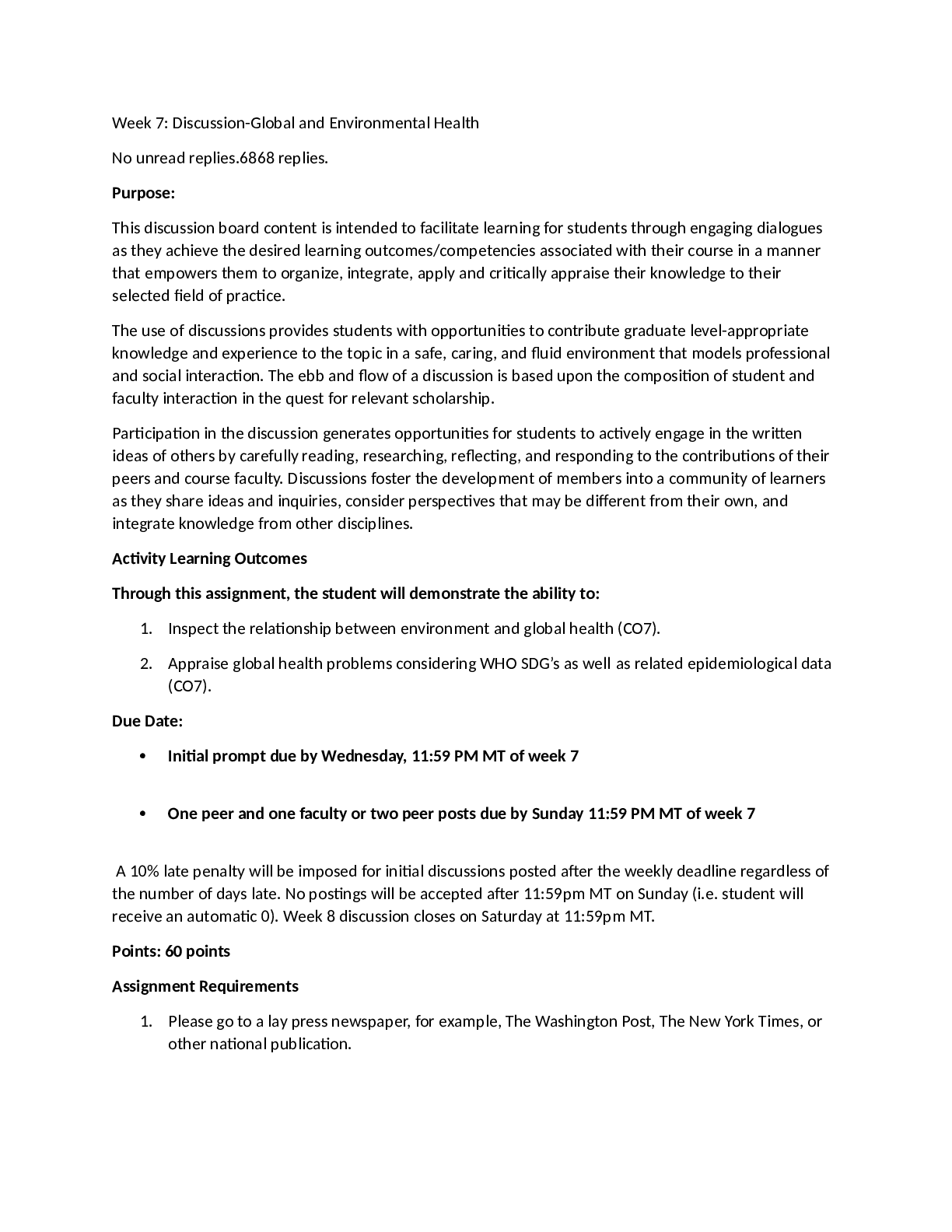
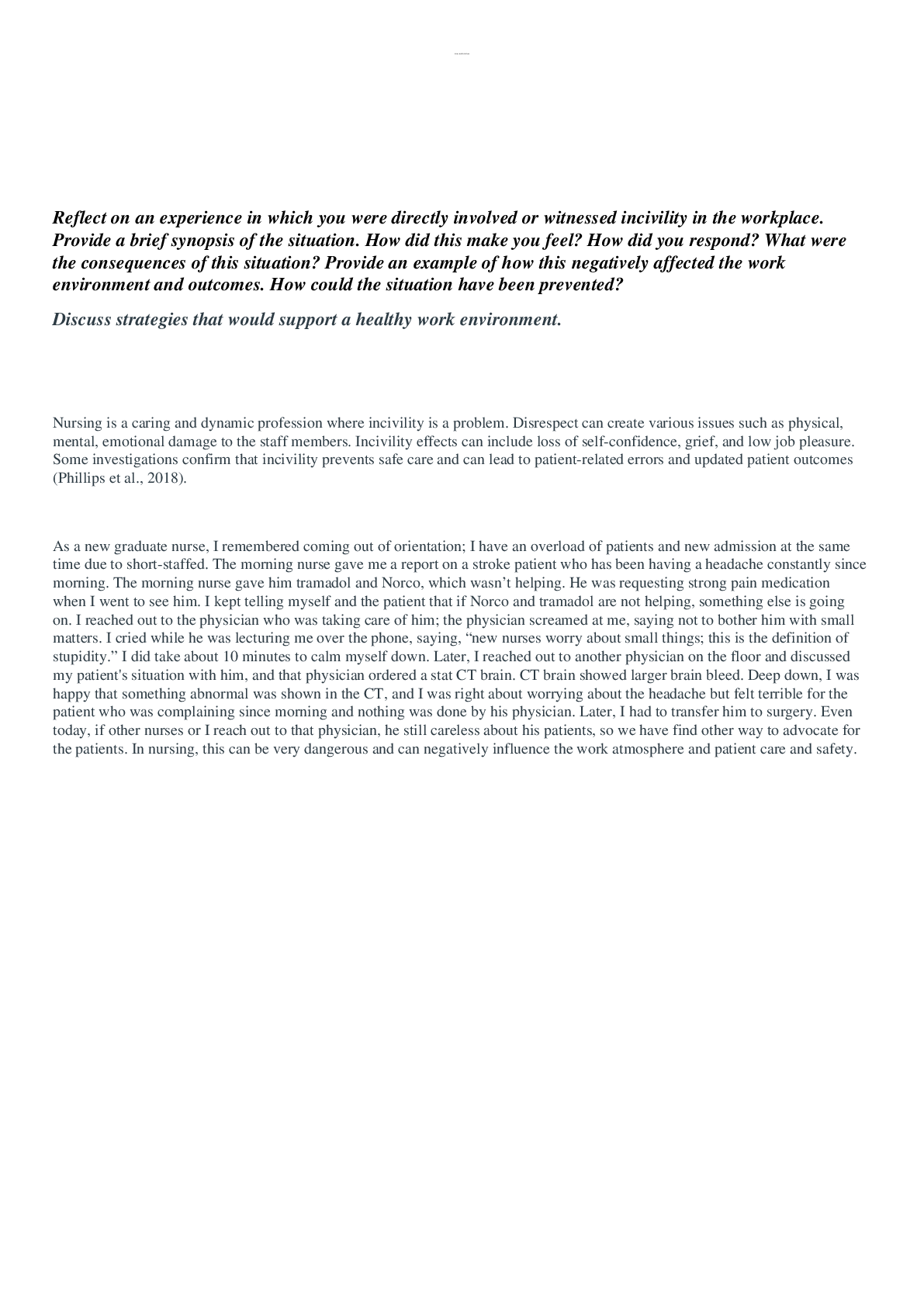

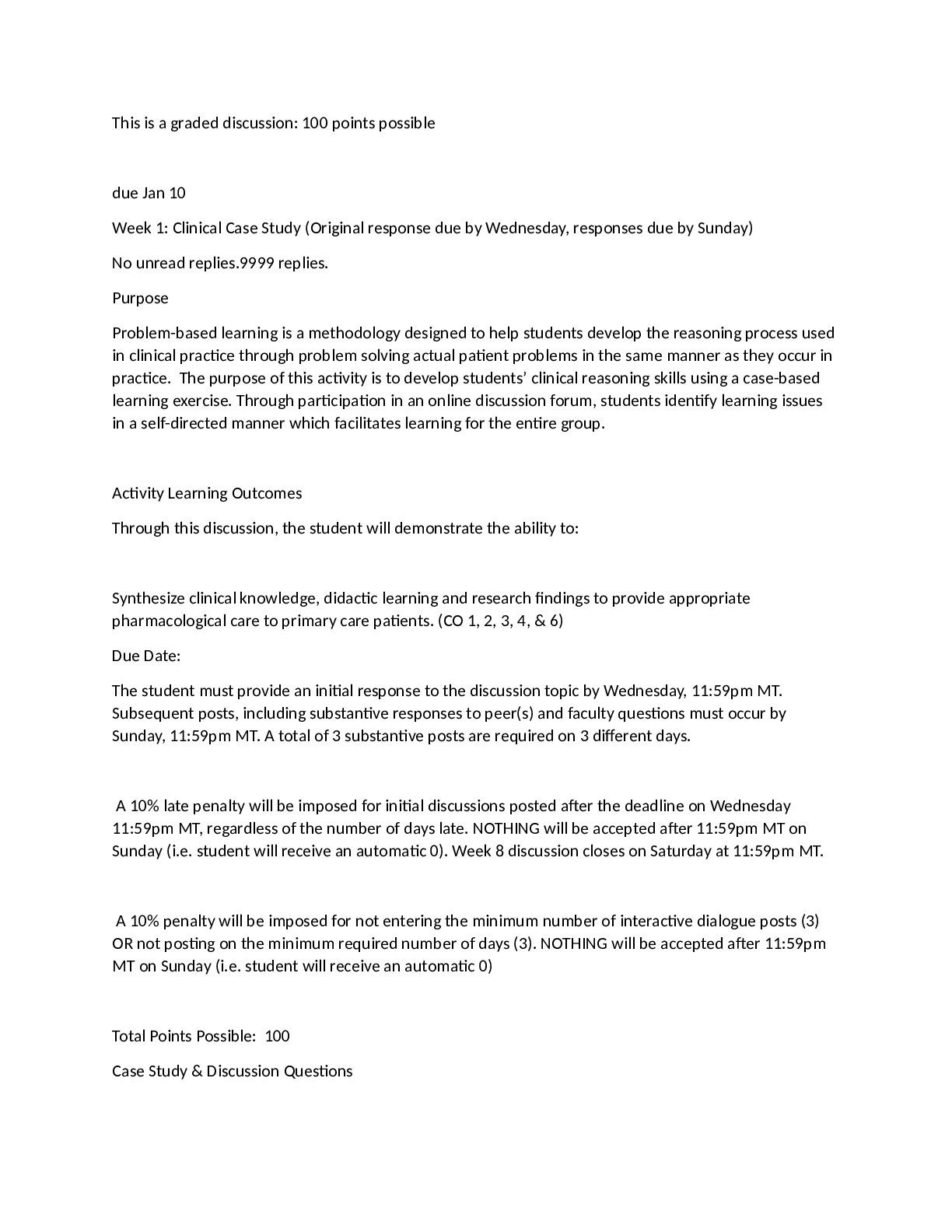
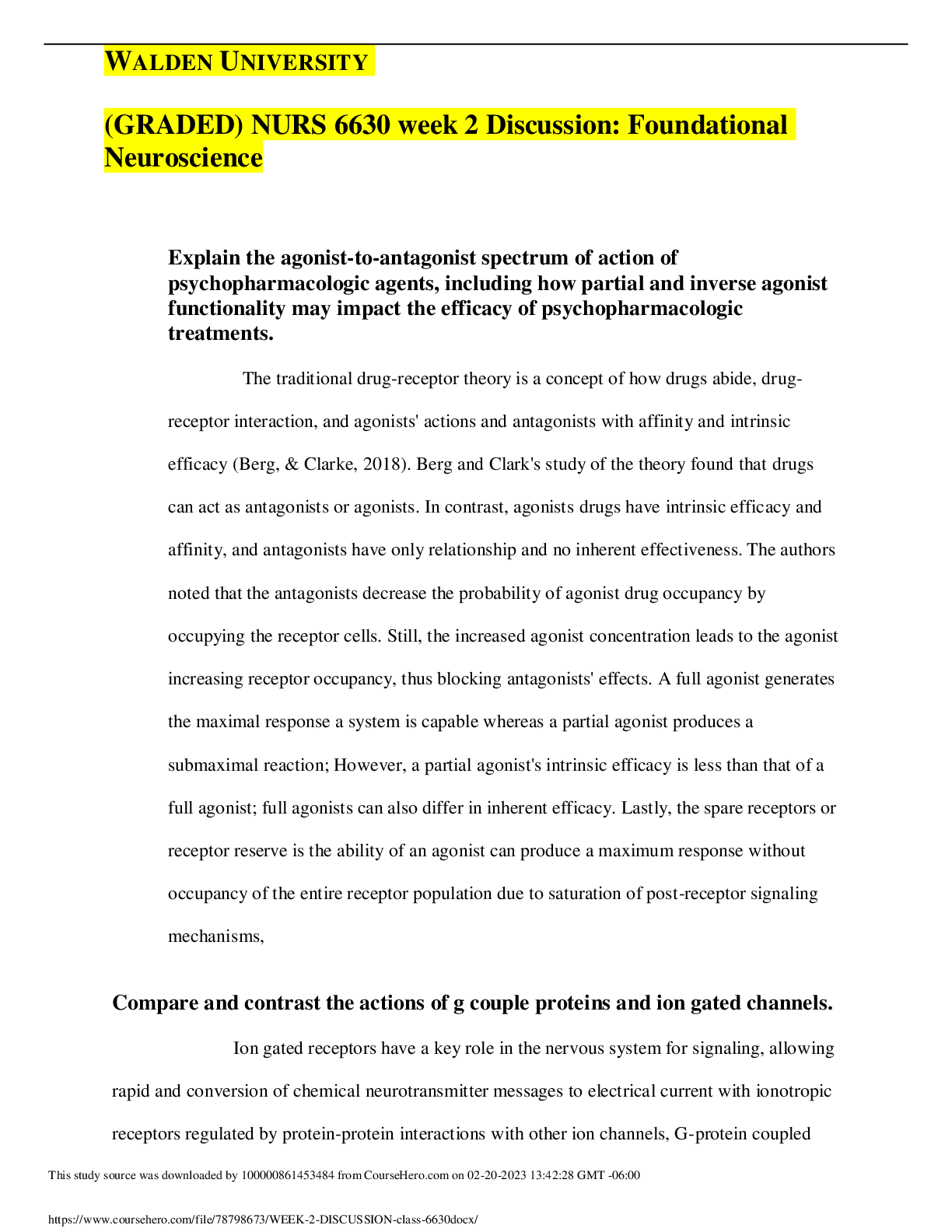

.png)

